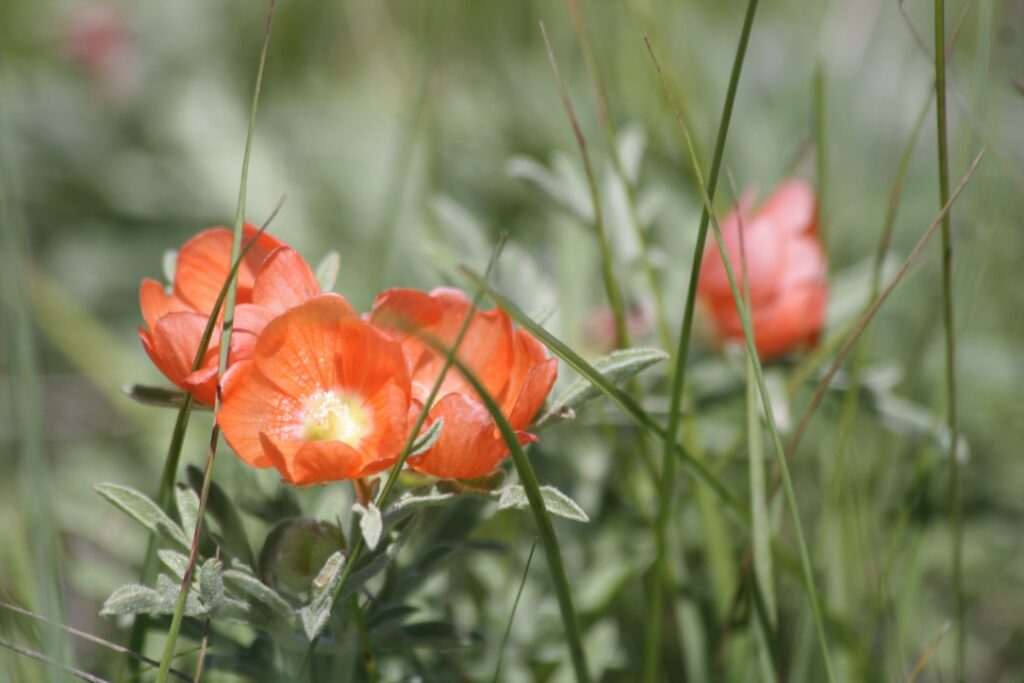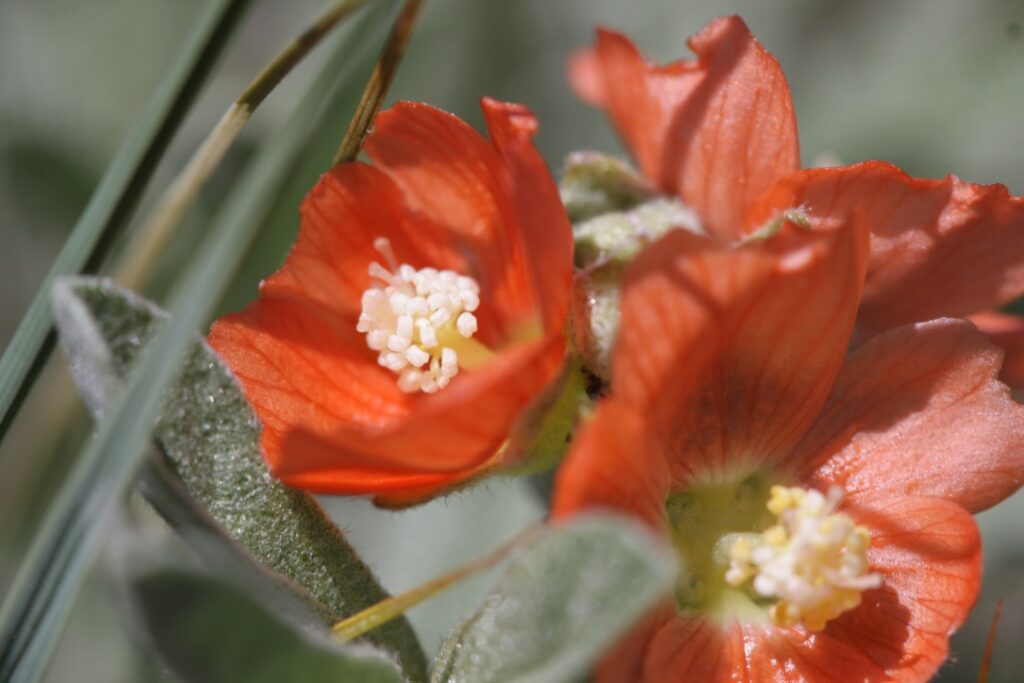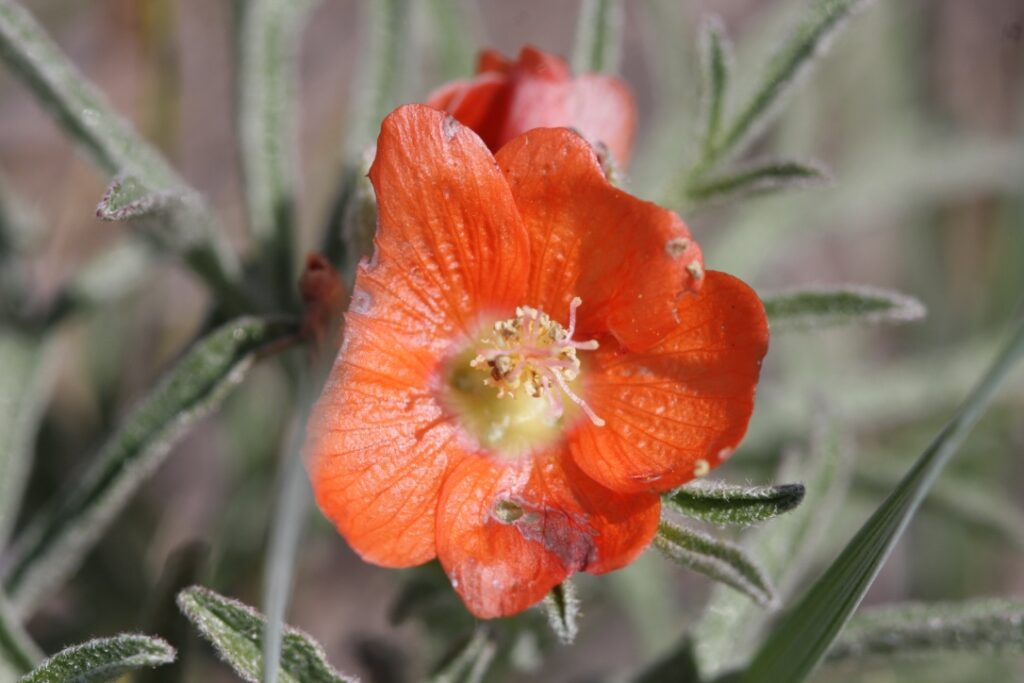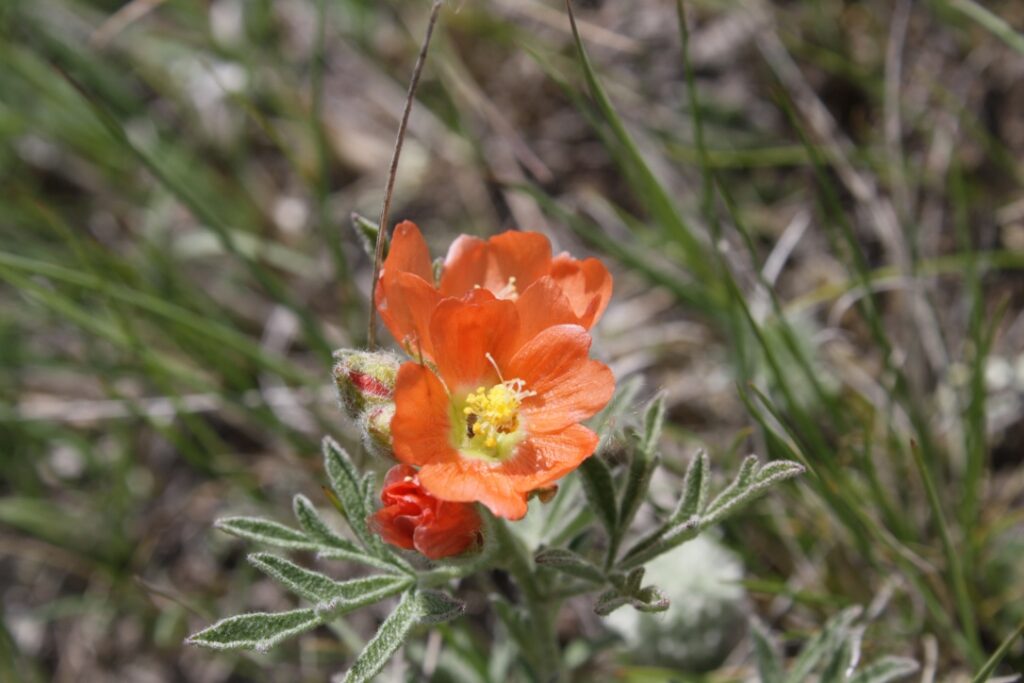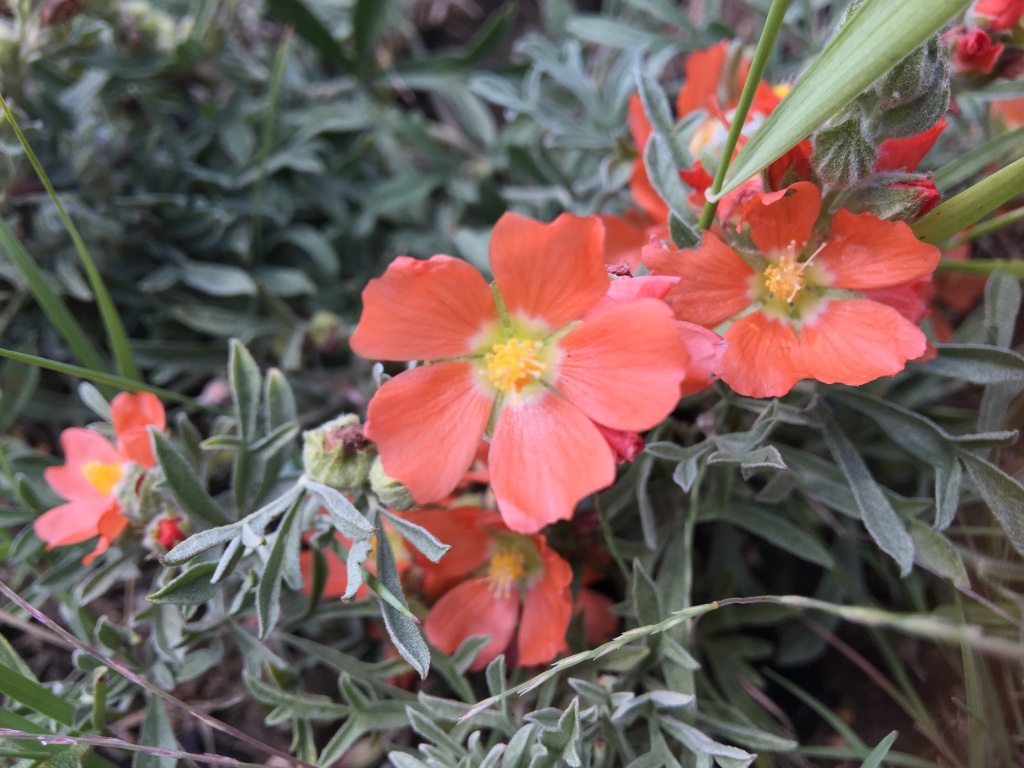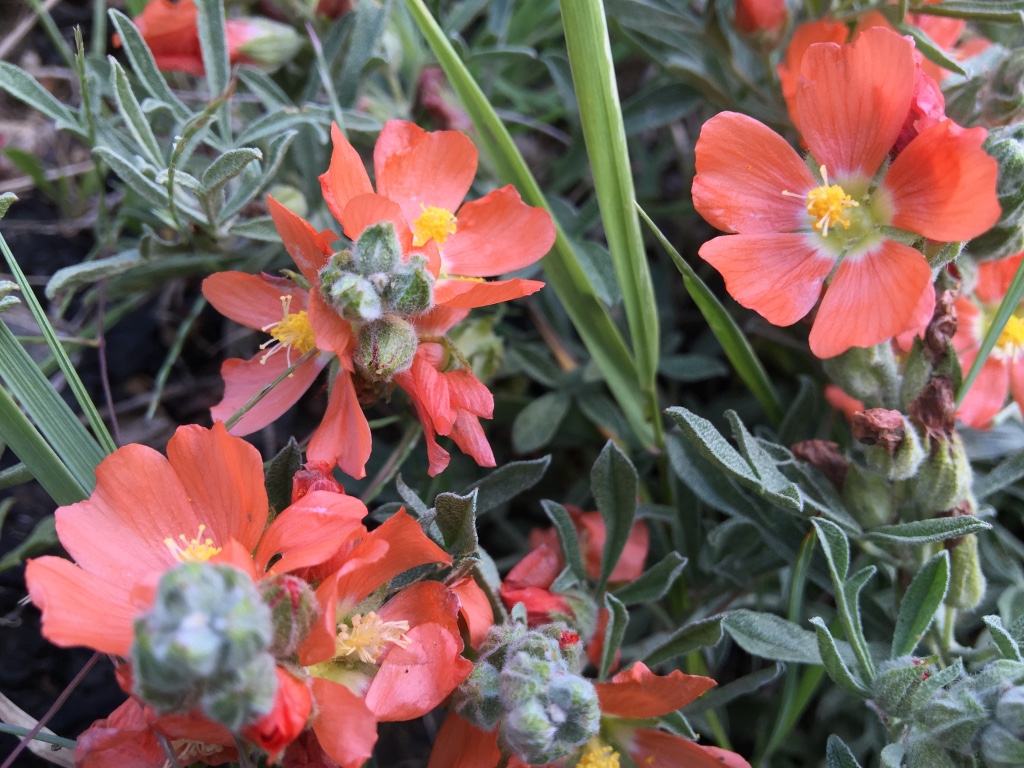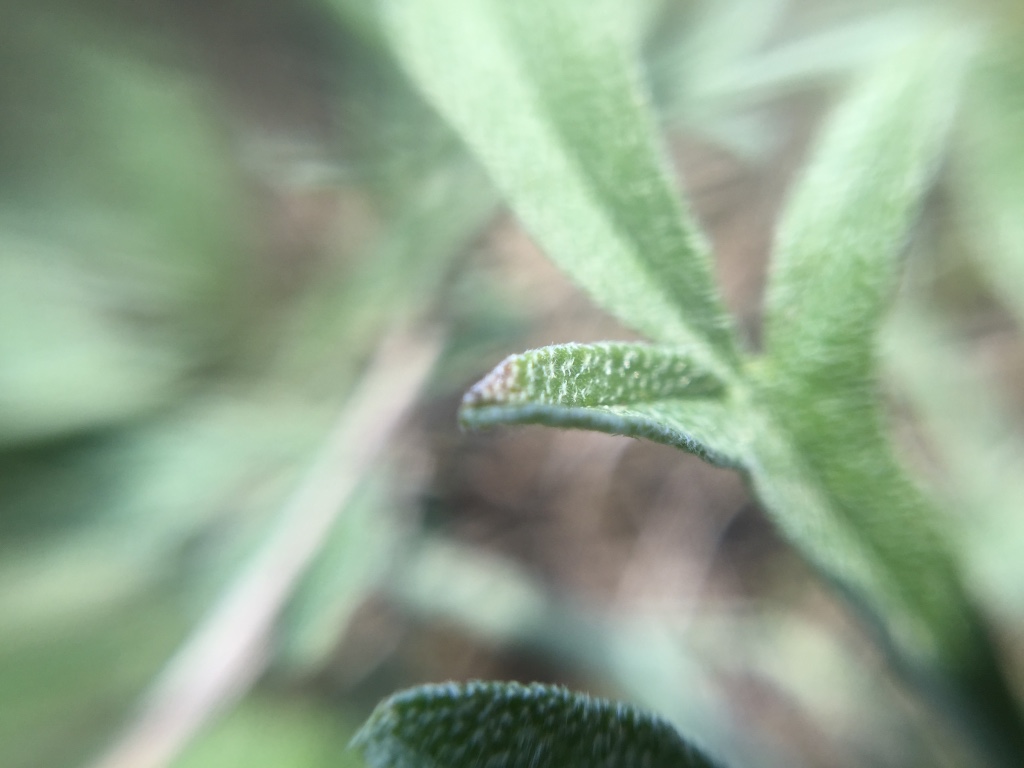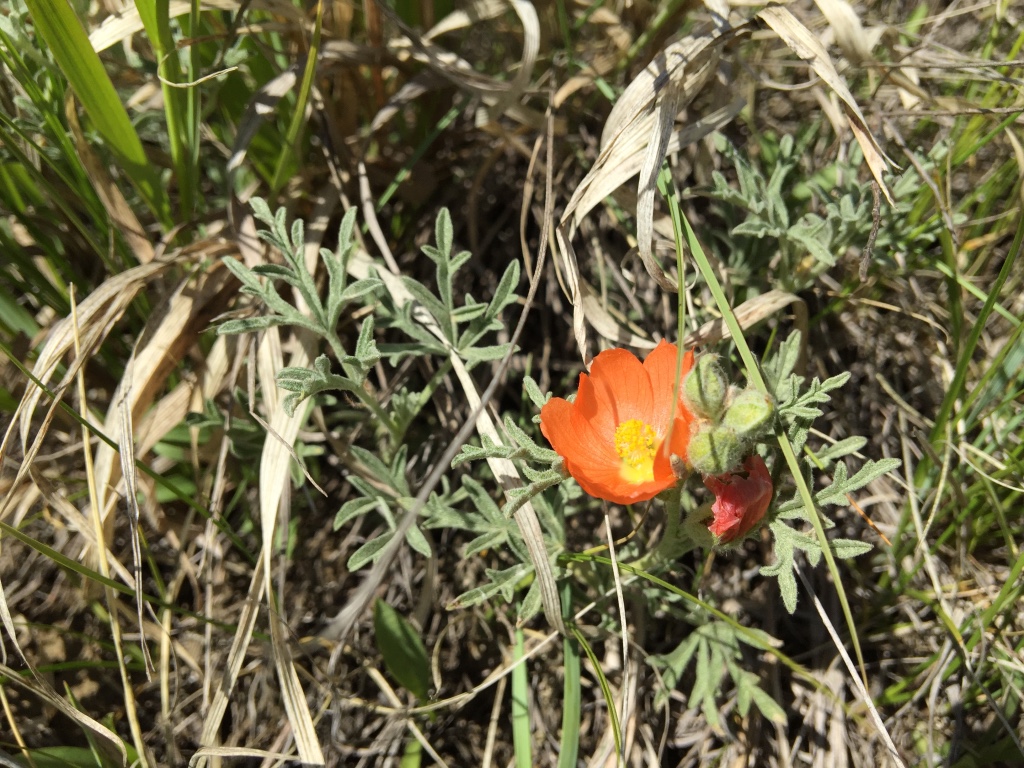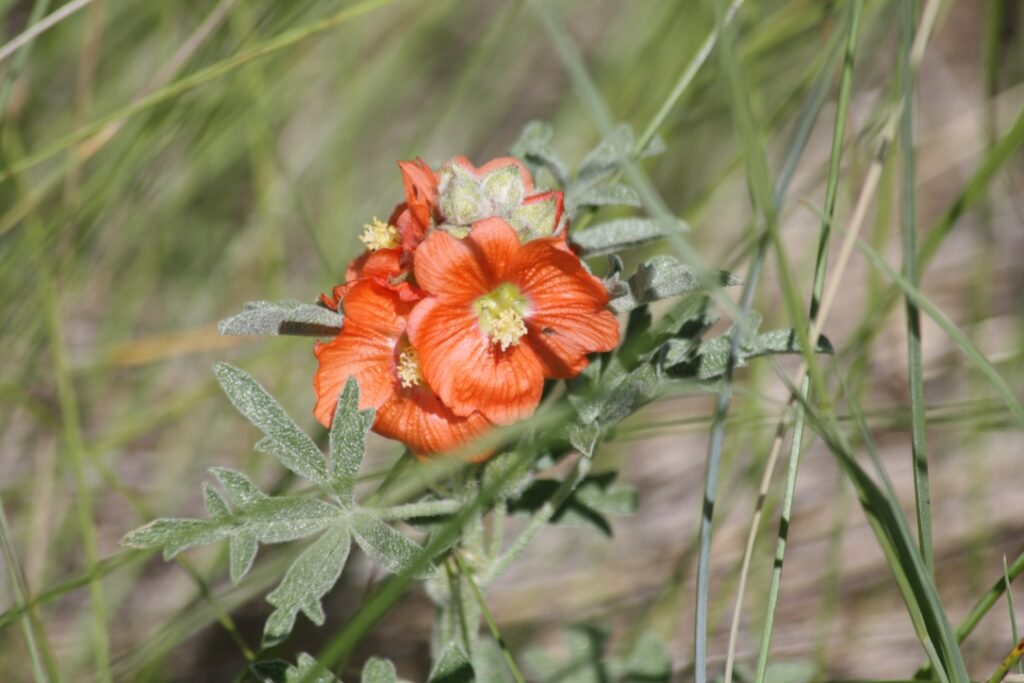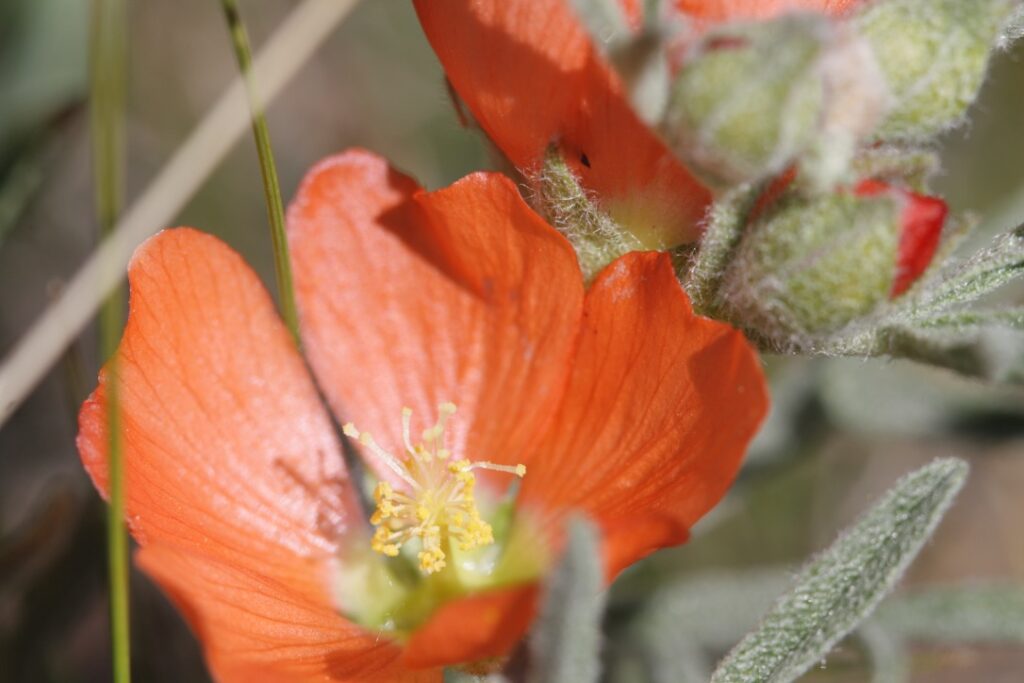Scarlet Mallow – Sphaeralcea cocciniea [Pursch] Rydb.
Family Malvaceae
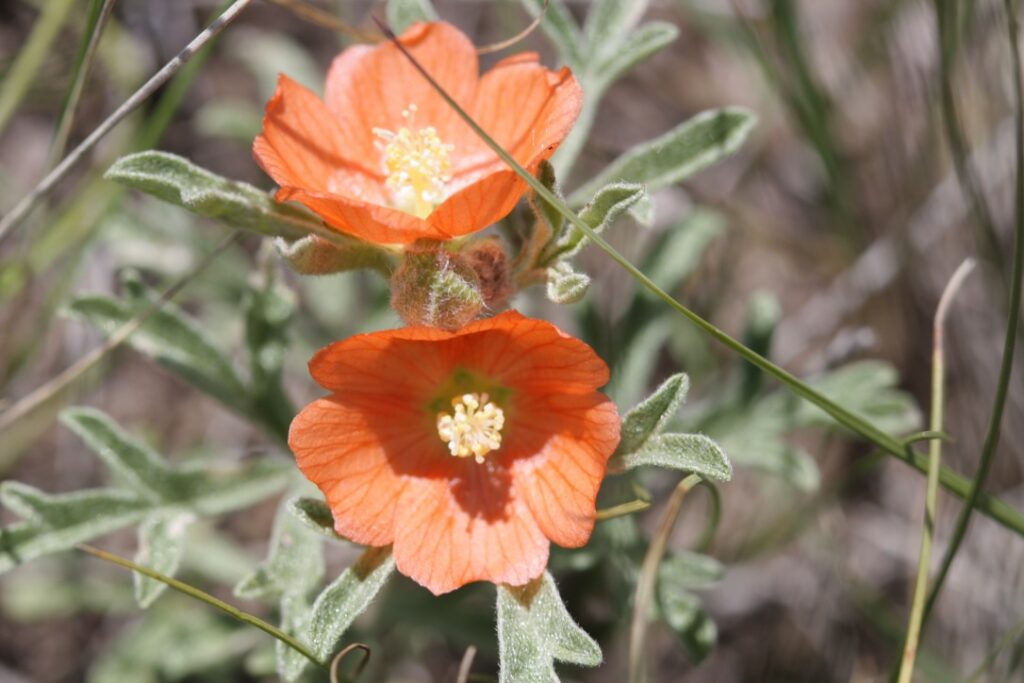
Synonyms
Malvastrum coccineum. Also known as Red False Globemallow, Copper Mallow, Cowboy’s Delight, Scarlet Globemallow, Prairie Mallow, and Caliche Globemallow.
Origin & Status
Common. Native to North America.
Notable Features to Identify:
This low-growing biennial grows 10 to 20 cm (occasionally 30 cm) tall and comes from extensive, creeping rhizomes that form clumps or mats. Stems are usually reclining or erect and may have a woody base.
Leaves (and stems) are greyish-green with star-shaped hairs. They are 3-divided and 2 to 5 cm long, cleft again into 2 to 3 lobes, and wedge-shaped at the base. Stipules at the very base of the leaves are early-deciduous.
The flowers are in spikes or short terminal racemes, with leaf-like bracts (especially lower) having star-shaped hairs. The corolla is saucer-shaped with five brick-red to orange petals (1 to 1.5 cm long) that fade to pale orange with maturity. These showy and fragrant flowers are around 10 to 25 mm in diameter.
When & Where to Find This Plant:
S. coccinea is most commonly found in the open grasslands of the Prairie Ecoregion. It prefers dry grasslands of Hesperostipa–Bouteloua (speargrass and blue grama), Hesperostipa-Elymus-Bouteloua (speargrass, thickspike [nothern] wheatgrass and blue grama), and solonetzic Hesperostipa-Pascopyrum (speargrass and western wheatgrass) plant communities. It does not like saline Distichlis-Pascopyrum-Hordeum (salt grass, western wheatgrass, and foxtail barley) or vegetative sand dune plant communities.
Rarely is it found outside of the prairie grasslands, however, some reports claim it has been found in the Parkland Ecoregion and occasionally in the southern Foothills Ecoregion. I have yet to find S. cocciniea in either of those regions, however it is plausible it will occur there, but only in the most driest exposed places that are the most prone to drought conditions.
S. cocciniea is also found on disturbed sites: along roadsides and other areas where the soil was disturbed, including near ground squirrel holes.
It commonly blooms from June to July, occasionally into August. Rarely does it bloom in the fall except in the very southern parts of the Canadian prairies, right up to the USA border.
Is This Species Edible, Medicinal or Toxic?
Many Indigenous tribes may have used the roots of this plant as emergency rations during food shortages. It was also chewed into a paste as a cooling agent for skin problems such as scalds, sores, burns, swellings and wounds. It also helped reduce pain. Crushed leaves were made into poultices for skin irritations and also as a shoe liner for blistered feet. S. cocciniea tea was used by the Navajo tribe to improve the taste of bitter medicinal herbs. Tea was also used as a lotion to treat skin diseases and as a tonic to improve appetite. The paste was also used ceremonially by rubbing a preparation of this plant (likely a paste) on the hands and arms to protect them from boiling water.
What Other Species Can This Be Confused With?
There are no similar species in Western Canada.
Other Fascinating Information:
S. coccinea is best noted as an early successional species due to its habit of quickly establishing itself on regional disturbances.
It tends to increase under heavy grazing. The creeping growth habit, poor palatability, and ability to do well on poor soils and dry locations ensure its survival and success. It will decrease under light to no grazing due largely to the competition from grasses and other forbs.
Value to Livestock & Wildlife
Conventional standards consider scarlet mallow’s forage value poor and unpalatable. However, plenty of grazing herbivores like cattle, bison, sheep, deer and pronghorn will graze this plant for medicinal benefit, as it is rich in Vitamin A and low in calcium and magnesium. It is also a staple for black-tailed prairie dogs.
S. coccinea also attracts pollinators such as the Small Checkered Skipper (Pygrus scripture).
Suitability/Use for Reclamation:
Due to its rhizomatous root system, S. coccinea has been used on disturbed sites to stabilize the soil. It is also an excellent attractant to native pollinators.
Gallery
